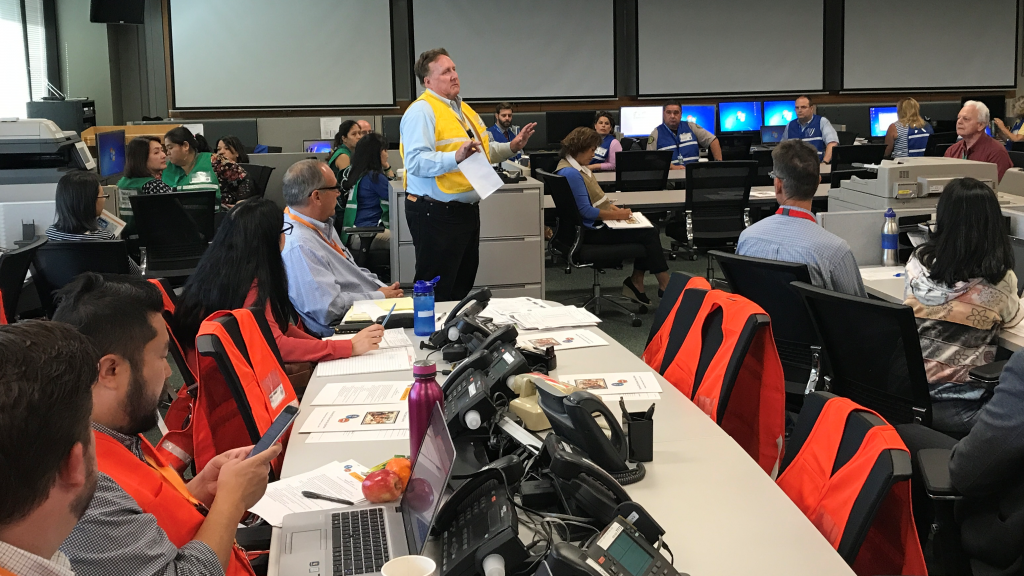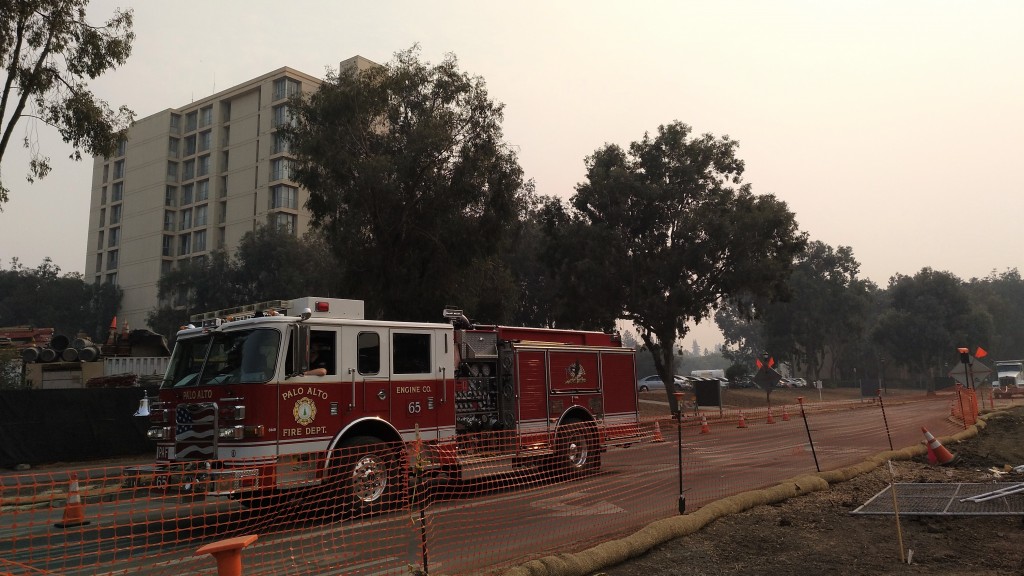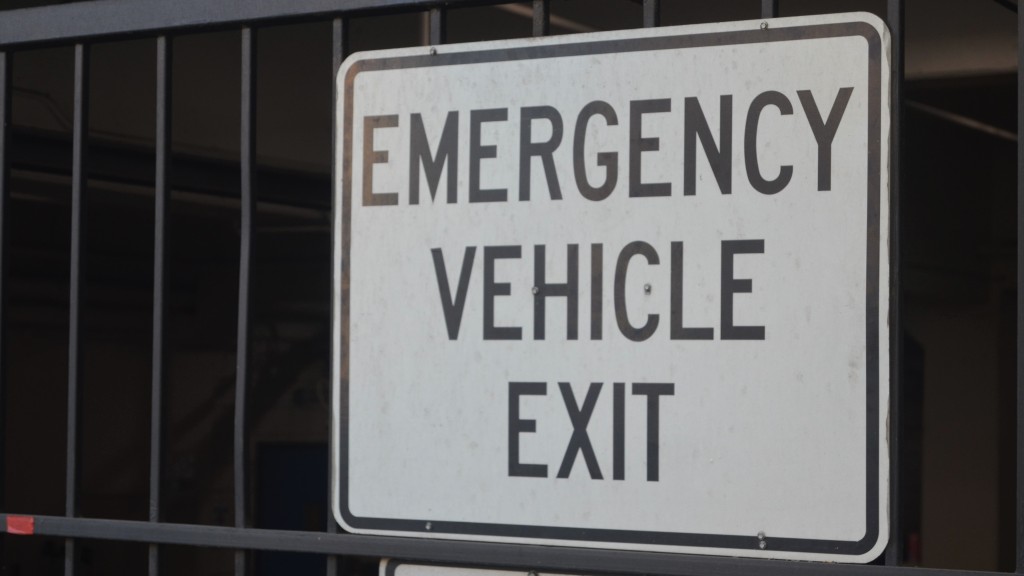PALO ALTO – The recent fires that swept through California’s wine country have raised concerns over the appropriate use of emergency alert systems –whether it was sufficient to send alerts that are locally targeted and that require a previous registration. In San Mateo and Santa Clara counties, residents are being urged to sign up for local alert services.
AlertSCC and SMCAlert are two of the alert services offered by Santa Clara and San Mateo, respectively, but officials can contact the population through multiple ways, such as local alerts systems or communication via social media.
“It’s really important to communicate to the public that these systems can save their lives,” said Patty Eaton, Public and Risk Communications Officer of the Santa Clara County Office of Emergency Services, in an interview. “They’re very powerful, and it’s very simple to register.”

Her office will launch a social media campaign in January 2018 to reach out to people in the county and stress the importance of being aware of risk situations. Santa Clara County and some of its cities will push out information and signup links on their social media channels, designed to maximize registration before the winter storms set in.
The push to register people for emergency alets comes after the wildfires in Northern California left 43 people dead –making it the deadliest wildfire in the state’s history– and more than 5,700 homes and businesses destroyed.
“I do think now that we have mobile phones that can alert us so quickly that we need to use them more effectively,” Rep. Jackie Speier (D-14th) told the Peninsula Press during an interview. “It would have been helpful, maybe some lives would have been saved.”
Neither Sonoma County nor Napa County sent out warnings through the federal Wireless Emergency Alert system, which sends alerts to all cellphones in a specific geographic area. Officials said they didn’t want to create panic in areas that were not in direct danger.
Palo Alto officials said they would have done the same.
“If you put out the messaging to people who are not directly affected, you’re panicking people really unnecessarily,” said James Reifschneider, Lieutenant of the Palo Alto Police Department, in an interview.
“If we send a city-wide announcement or we send out (alerts) to a large area, we could potentially have thousands of people trying to evacuate (…) along very limited transportation corridors,” said Nathan Rainey, Emergency Services Coordinator of Palo Alto, in an interview.

This could end up “congesting” the areas where emergency response vehicles and personnel need access too, he added.
Alerts could be sent to specific locations, but any emergency situation might switch from one place to another quickly. In that case, it’s hard to react on time, officials say.
Sonoma County sent out warnings through its local alert services, but these require residents to register in advance in order to receive messages. Only 2.1 percent of the population of Sonoma County (a region of 503,070 residents) was registered in SoCo Alerts –the County’s emergency system– when the fires started.
Santa Clara and San Mateo have similar programs in place: AlertSCC and SMCAlert are County-wide systems that send emergency and evacuation alerts to residents. They use White Pages and the Yellow Pages directories to reach landline phones, but residents are required to register in order to receive messages via cellphones or email. Counties and cities in the South Bay will also make use of social media –Facebook, Twitter, Nixle and NextDoor– and push messages through traditional broadcast media.
Rainey explained that, after the Wine Country fires, there has been “a little bit of heightened interest in preparedness.” Currently, the SCC Alerts system has 66,874 subscribers, including the local Cupertino Alert System. That’s a 3.5 percent of the roughly 2 million residents of Santa Clara County.

Throughout the year, the Palo Alto Office of Emergency Services attends various community events, where officials set up information booths. “We just try to talk to the public and have a conversation about the hazards that we have and how (residents) should be prepared,” Rainey explains.
This would include registration in the local systems, but one of the concerns regarding these, according to Rep. Speier, is the “right to privacy” since residents need to provide their phone numbers and email addresses.
“Who is willing to share their phone number in an age where phone scams and telemarketers are a common occurrence?,” said Katie Nelson, Public Relations Coordinator of the Mountain View Police Department. “We need to think about how we can improve security and assurances that people’s phone numbers won’t be compromised,” she added.
Another challenge is to “reach everyone who needs to know”, according to Catherine Capriles, Deputy Fire Chief of the Palo Alto Fire Department. Since a registration is needed and communications could be cut off, if evacuations are ordered, both the Police and Fire Department of the city would “actually drive through the neighborhoods and knock on doors.” On the other hand, more sophisticated ways of alerting residents, such as sirens, haven’t been considered, Rainey said.
“None of these are really kind of the magic bullet where we hit everybody,” added Reifschneider. “And that’s why in the event of an emergency, we would never rely upon any of (the systems) individually to notify everyone,” he added.

The most vulnerable population is also a matter of concern for county and city officials. Seniors, disabled people and people whose first language is not English are harder to reach through the traditional methods of alerts.
“Patrol officers and those who are assisting in evacuations physically going to speak with these vulnerable populations (or evacuate them) is the best way to reach them”, said Nelson.
Officials agree that having people registered in the local systems and an effective alert communication is key to save lives.
“We’re moving into flood season, we have a lot of fires in this region, you never know when we’re going to have an emergency of any size (…),” said Eaton, Public and Risk Communications Officer of the Santa Clara County Office of Emergency Services. “This is an opportunity to prepare for an emergency,” she added.
